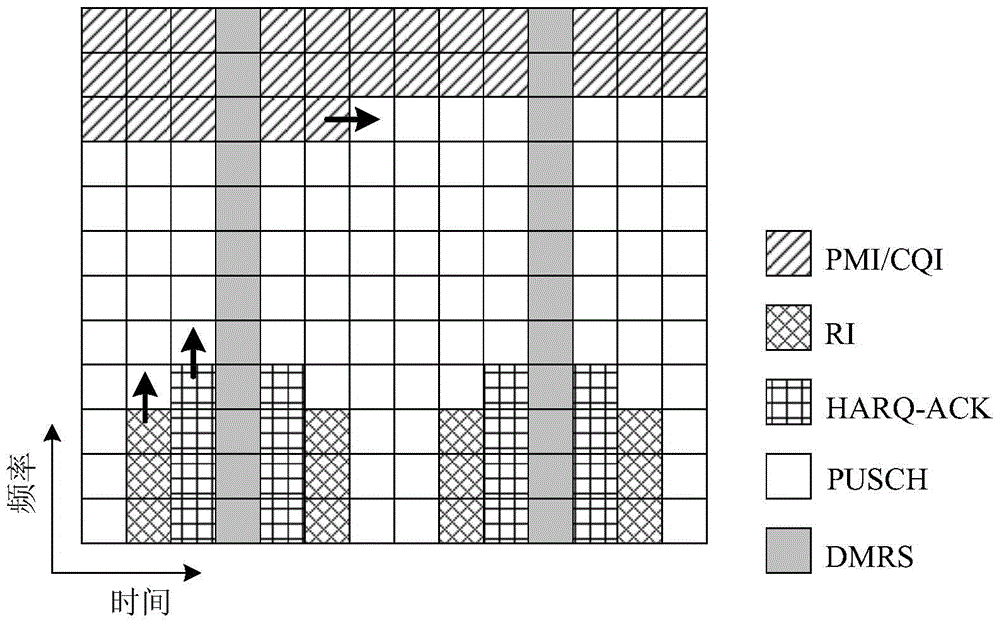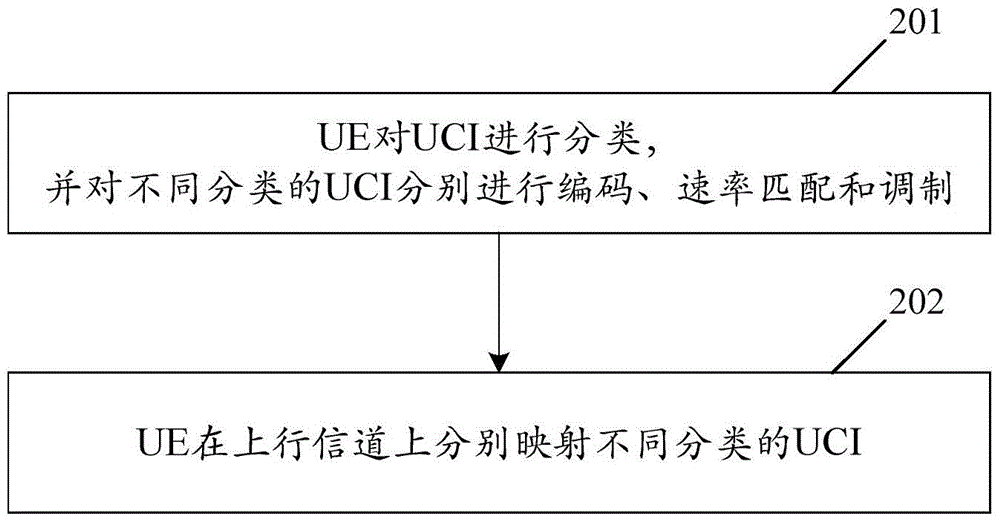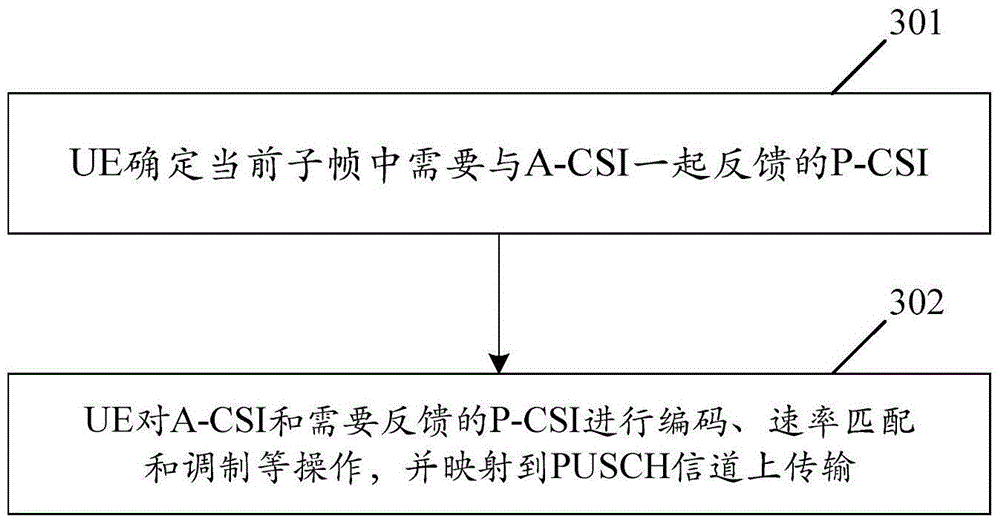Method for multiplexing uplink information
A technology for controlling information and channels, which is applied in the direction of using the return channel for error prevention/detection, wireless communication, signaling distribution, etc., and can solve the problem of increasing the total number of HARQ-ACK bits
- Summary
- Abstract
- Description
- Claims
- Application Information
AI Technical Summary
Problems solved by technology
Method used
Image
Examples
Embodiment 1
[0129] In the CA system, when the number of configured cells is large, or the size of the binding window is large, the UE needs to feed back more HARQ-ACK bits, for example, more than 22 bits. In addition, when the number of configured cells is large, the CSI information that the UE needs to feed back also increases accordingly. In addition, the UE may also need to send a Scheduling Request (SR) in the uplink direction. Because the number of bits of HARQ-ACK and CSI has increased, such as figure 1 The existing UCI mapping method shown will not be able to meet the performance requirements of UCI transmission in certain cases. For example, taking HARQ-ACK as an example, when the number of bits of HARQ-ACK information is large, but the number of PRBs of PUSCH is small, the method of only mapping HARQ-ACK information to the 4 symbols next to DMRS may not be enough to ensure HARQ - ACK transmission performance requirements.
[0130] The following describes the processing method ...
Embodiment 2
[0146] In the existing CA system, when the P-CSI and A-CSI need to be fed back in the same subframe, the processing method is to drop the P-CSI and only feed back the A-CSI. However, when the number of configured cells is large, the CSI information that the UE needs to feed back increases accordingly, and the probability that P-CSI and A-CSI need to be fed back in the same subframe also increases accordingly. In order to reduce the impact on downlink transmission, it is necessary to support the transmission of P-CSI and A-CSI in the same subframe. At this time, all the currently triggered A-CSI needs to be fed back, and for the P-CSI in this subframe, a part of the P-CSI or all of the P-CSI may be fed back according to a certain criterion. Several preferred methods provided by the present invention are described below.
[0147] The first method is to transmit only the P-CSI of the Pcell in addition to the A-CSI. That is, when the P-CSI mapped to a subframe includes the P-CSI...
Embodiment 3
[0158] In one uplink subframe, multiple types of UCI information may need to be transmitted. As the number of configured UE cells increases, this requirement becomes more prominent. In a subframe, the UE may perform joint coding, rate matching and modulation on all the UCI information to be fed back in the current subframe, and then map it to the uplink channel. Alternatively, the UE may also classify the UCI information and perform encoding, rate matching and modulation on the UCI information of different classifications respectively. For example, information that requires higher reliability, including HARQ-ACK, SR, and the first type of CSI information can be jointly encoded together; second type CSI information that requires lower reliability can be jointly encoded together. In order to map to the uplink channel, for a set of jointly coded UCI information, it is necessary to calculate the number of modulation symbols occupied by it.
[0159] In the existing LTE CA system,...
PUM
 Login to View More
Login to View More Abstract
Description
Claims
Application Information
 Login to View More
Login to View More - R&D
- Intellectual Property
- Life Sciences
- Materials
- Tech Scout
- Unparalleled Data Quality
- Higher Quality Content
- 60% Fewer Hallucinations
Browse by: Latest US Patents, China's latest patents, Technical Efficacy Thesaurus, Application Domain, Technology Topic, Popular Technical Reports.
© 2025 PatSnap. All rights reserved.Legal|Privacy policy|Modern Slavery Act Transparency Statement|Sitemap|About US| Contact US: help@patsnap.com



